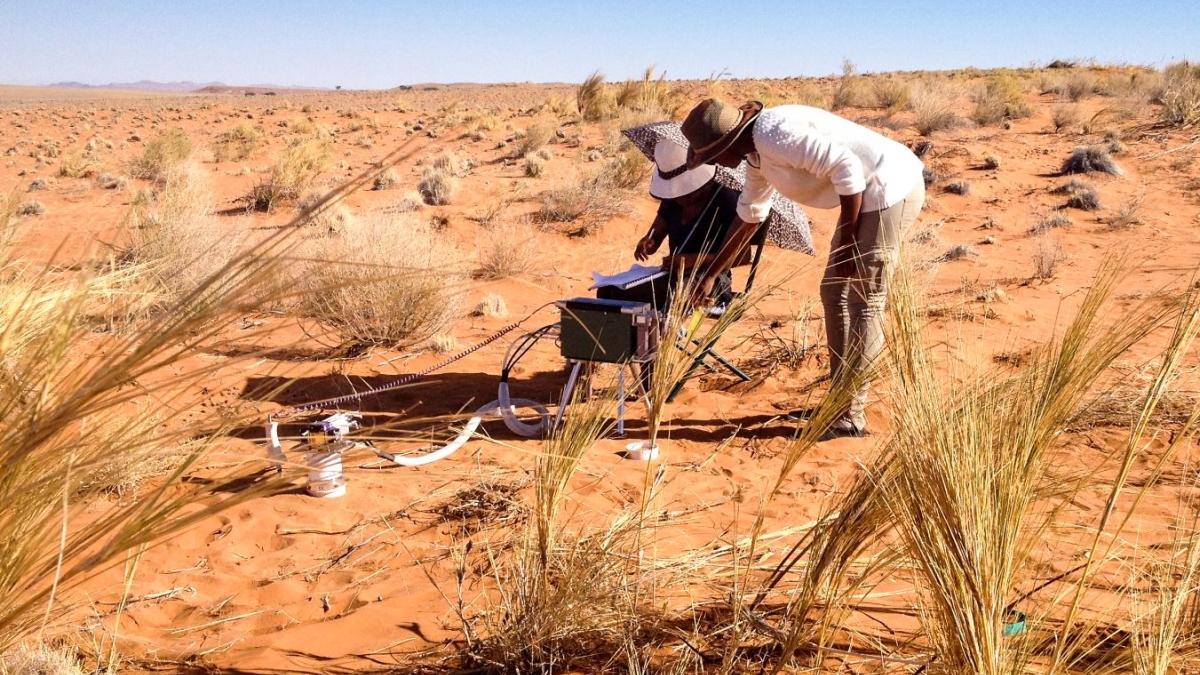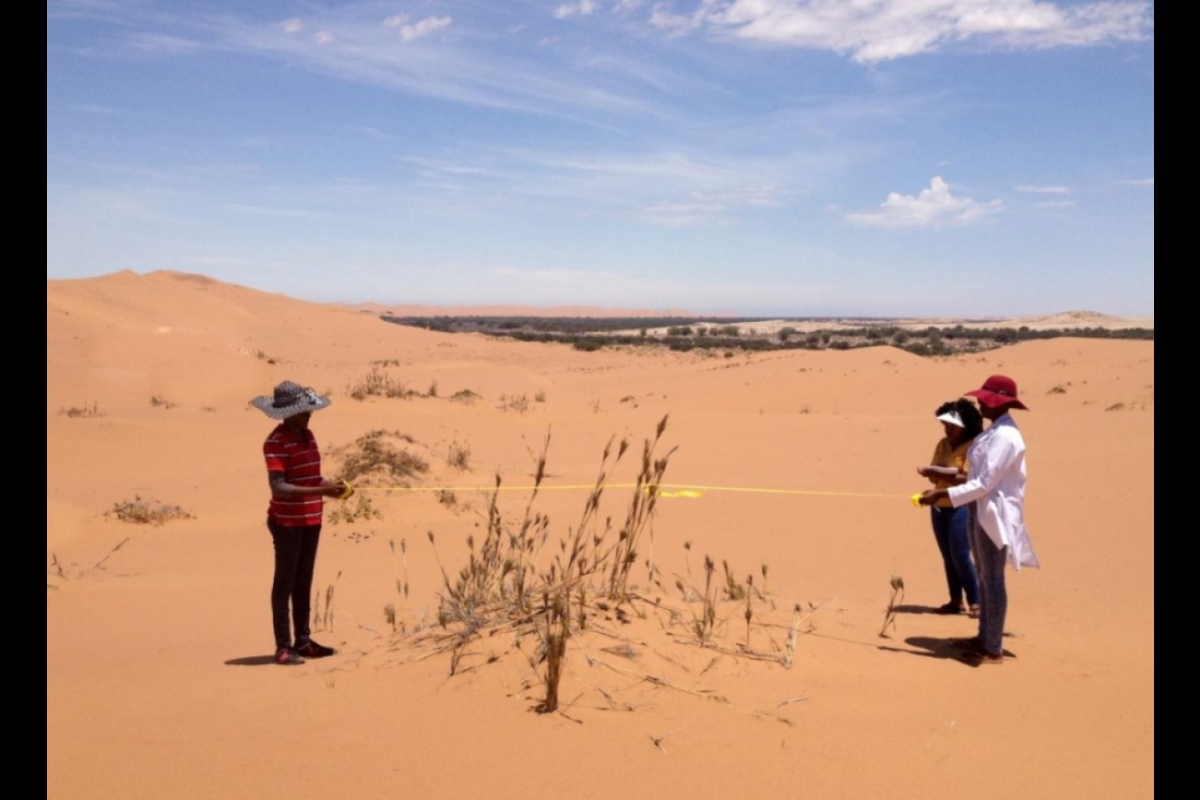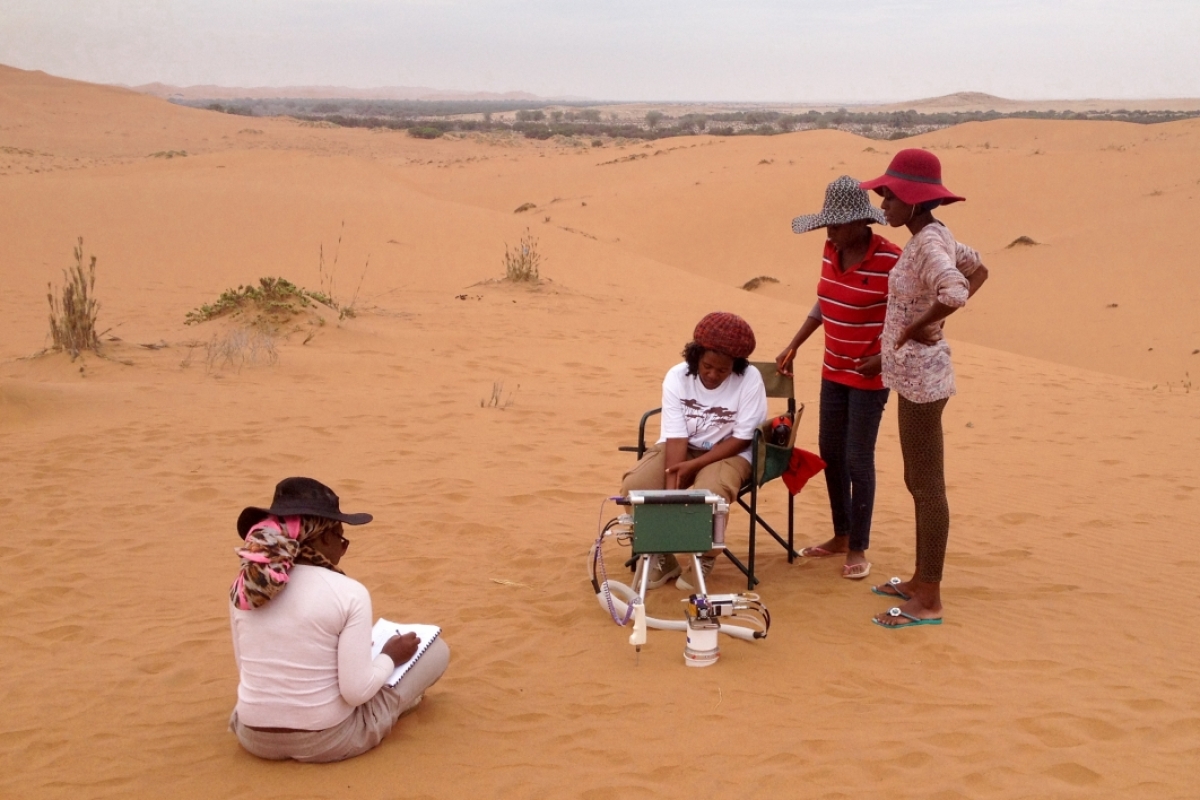One of the world’s driest deserts is the focus of a new study on our changing climate

University students Ruusa Gottlieb (left) and Priscilla Mundilo measure carbon dioxide release from the soil at one of the high rainfall sites in the Namib Desert. Photo: Heather Throop/ASU
Carbon, one of the main building blocks for all life on Earth, cycles among living organisms and the environment. This cycle, and how it works in one of the driest places on Earth, is the subject of a new study recently published in the journal Plant and Soil with lead author and Arizona State University scientist Heather Throop.
While the natural carbon cycle should be balanced each year, with about as much carbon taken out of the atmosphere as is released back by natural processes, humans are upsetting this balance through carbon dioxide additions to the atmosphere, both through changing land use that releases carbon stored in soils and from burning fossil fuels.
In an effort to understand what controls the release of carbon dioxide from soils in deserts, Throop and a team of university students from Namibia conducted field work in the Namib Desert, one of the world’s driest regions that stretches more than 1,200 miles along the Atlantic coasts of Angola, Namibia and South Africa.
What Throop and her team ultimately determined from their research is that subtle differences in surface topography and erosion have big influences on microorganisms in the soil and these differences ultimately affect carbon cycling. Even in the driest places, they found signs of life influencing carbon cycling.
“The amount of carbon dioxide in the atmosphere affects our climate, so understanding what affects the release of carbon from soils is important for predicting how climate will change in the future,” said Throop, who is an associate professor in the School of Earth and Space Exploration and the School of Life Sciences.
To conduct their analyses, the research team chose six locations that differed in yearly rainfall. At each site they carried out 48-hour sampling campaigns, working continuously day and night to collect data. At each location, the team analyzed the landscape structure and plants and selected representative locations to sample. Then, they simulated rainfall and used gas analyzers to measure carbon dioxide release from soils to determine how carbon cycling responded as soils dried after the simulated rain.
“It’s really an incredible amount of data to collect manually,” said Throop. “And having a crew of dedicated and enthusiastic students made this work possible. Often for remote field work like this, we just get a snapshot of what is happening at one or two sites or at a few points in time. It was exciting to be able to collect the data continuously for a few days and at six different sites.”
The students participating in this research came from the University of Namibia and the Namibia University of Science and Technology. They were each participating in the Summer Drylands Program, an intense research experience where students plan, execute and report on an experiment within a short timeframe.
“The ability of technology to record soil carbon was outstanding,” said co-author and student researcher Vimbai Marufu, who is now in graduate school at the Namibia University of Science and Technology. “What I treasure the most from the experience is what it means to work on an interdisciplinary team and the unexplainable satisfaction of being close to nature.”
And there are plans to continue additional fieldwork in the Namib Desert with a recent grant from the National Science Foundation to ASU. This grant will provide support for U.S. students to conduct research in the Namib Desert in collaboration with Namibian researchers.
“We hope to use this work to help us in understanding how deserts respond to a changing climate,” said Throop. “How biological processes function in the extreme dry of the Namib Desert will gives us clues about how relatively wet deserts will behave under drier conditions.”
More Science and technology

ASU author puts the fun in preparing for the apocalypse
The idea of an apocalypse was once only the stuff of science fiction — like in “Dawn of the Dead” or “I Am Legend.” However…

Meet student researchers solving real-world challenges
Developing sustainable solar energy solutions, deploying fungi to support soils affected by wildfire, making space education more…

Miss Arizona, computer science major wants to inspire children to combine code and creativity
Editor’s note: This story is part of a series of profiles of notable spring 2024 graduates. “It’s bittersweet.” That’s how…


